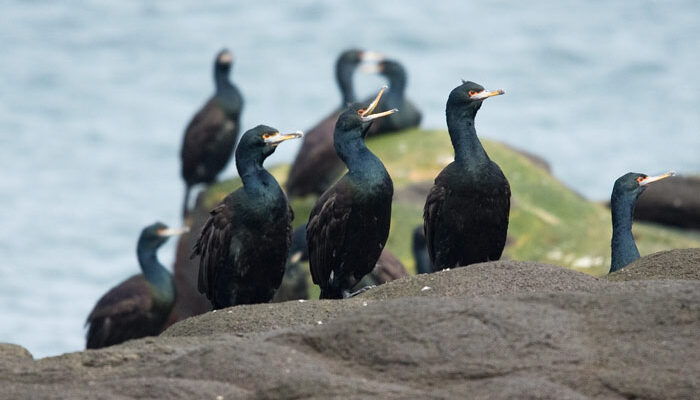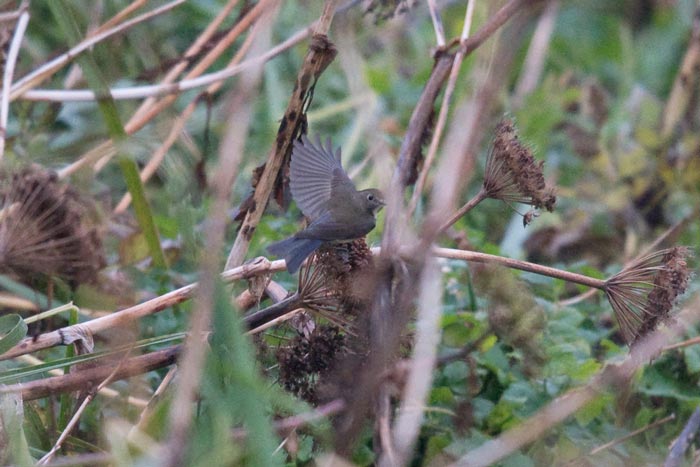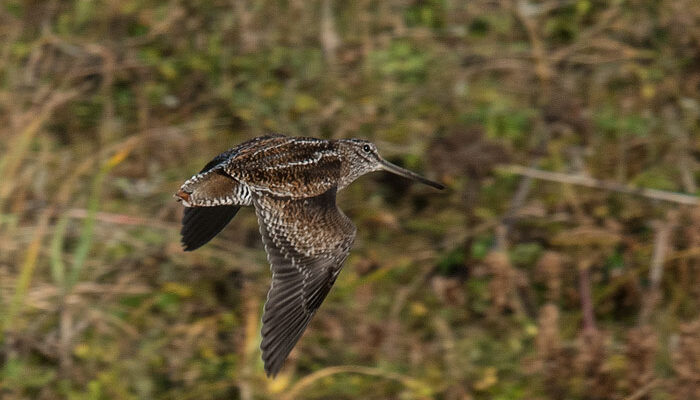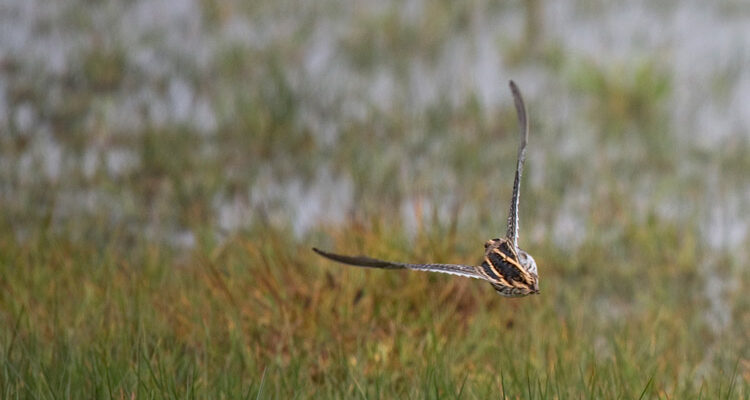The highlight of our 2018 fall tour St. Paul Island was this stunning Solitary Snipe, only…

Fall Migration in the Pribilofs
A Report on Our Fall Tour to the Pribilofs, September 25-30, 2016 (with unintended extension until October 2nd!)
Generally speaking, the birding in the Bering Sea during fall migration 2016 was a bit slow, with few than average numbers of vagrants found at Gambell and St. Paul Island. Our trip to St. Paul, however, was perfectly timed and managed to score several of the “best” rarities of the season. In 2015, our six-day fall tour was cut short by two days due to mechanical issues and then weather. This year, however, our six-day trip extended into eight days when weather prevented planes from taking us back to Anchorage for two days. So we can now report that our fall tour to St. Paul Island averages six days!
A flock of six BRAMBLINGS was one of the first birds to welcome us to the island shortly after landing. After dinner on that first night, we kicked up one of the highlights of this year’s tour, a JACK SNIPE! Other birders discovered this secretive shorebird several days before our arrival and we fortunately relocated along the marshy edges of Pumphouse Lake, the same location of one of last year’s Jack Snipes!
Our second day on the island we made one of the rarest discoveries of the year for the Bering Sea. That evening in the quarry we watched a hatch-year CEDAR WAXWING fly-catching above the rocky rim of the quarry. This was the first record of Cedar Waxwing for the Pribilofs and for the entire Bering Sea! Although not a bird of Asian origin, the magnitude of the rarity was thrilling! Two days later the waxwing was back in the quarry again, this time with a second Cedar Waxing! Anything really can happen in the Pribilofs.
As is often the case with birding, timing can be everything. One of the rarities of the season turned up on St. Paul Island the day before our tour—not one, but two Red-flanked Bluetails. We were all quite hopeful that at least one would stay for us. However, after three days of searching intently we hadn’t turned up any sign of either bird. Then on the morning of our fourth day, lightning struck when we found a RED-FLANKED BLUETAIL in a wild celery patch near the northeast end of the island. I couldn’t believe it! Not only was this incredibly rare bird still present, but it was also strangely accommodating and allowed our entire group to get great looks and even a few photos of it! The Bluetail was new for everyone in the group, including myself. A bit later in the morning a RED-THROATED PIPIT flew over screaming out its distinctive call. Unfortunately, it was not as generous as the Bluetail and we were unable to locate it on the ground.
As it did on our fall tour in 2015, finding a Red-legged Kittiwakes took some time. In addition to the rarity-fueled excitement on our fourth day, we also scored great views of a couple of RED-LEGGED KITTIWAKES at the gull roost on Big Lake. It hardly seemed the day could get any better. However, that evening after enjoying nice views of two Cedar Waxwings in the quarry, we got a call alerting us about one last great bird for the day. It was another pipit, this one slightly more accommodating than our Red-throated Pipit. An OLIVE-BACKED PIPIT showed up on Black Diamond Hill and we had just enough time to get over there and see it before dark.
The next day the winds were strong all day from the southeast and searching for land birds was quite difficult. We did a morning sea watch from Southwest Point and saw only a few NORTHERN FULMARS and SHORT-TAILED SHEARWATERS. By the afternoon, however, the winds and seas had built and a sea watch from East Landing and Reef Point became very exciting! Numbers of Short-tailed Shearwaters and Northern Fulmars built dramatically, including a large increase in dark morph Fulmars. Most of the Northern Fulmars that breed on the Pribilofs are light and intermediate morphs. Dark morph Northern Fulmars come from the Aleutian Islands, indicating that the winds were strong enough to bring seabirds up from farther south. Our hopes were high that other southern species might come on these winds as well. With diligent sea watching for the rest of the day, we picked up two FORK-TAILED STORM-PETRELS and the real prize—six MOTTLED PETRELS! Most of the Mottled Petrels were far out and conditions were tough, but two of the birds came quite close and despite difficult conditions, most birders at the sea watch were able to get on them.
Day six was supposed to be our last day on the island, but low visibility cancelled the flight. The next day the flight was cancelled due to strong crosswinds and we got another “bonus day.” Flight delays, either coming or going, are not uncommon on St. Paul and our last two years going out to St. Paul in the fall are a good reminder that a flexible schedule and attitude are required for air travel in the Bering Sea.
An exciting list of Bering Sea specialties, several thrilling rarities, and a fun group—this was a great trip to St. Paul Island!
Good Birding,
Aaron

Excitement in the form of a Red-flanked Bluetail in wild celery. Photo Aaron Lang.

